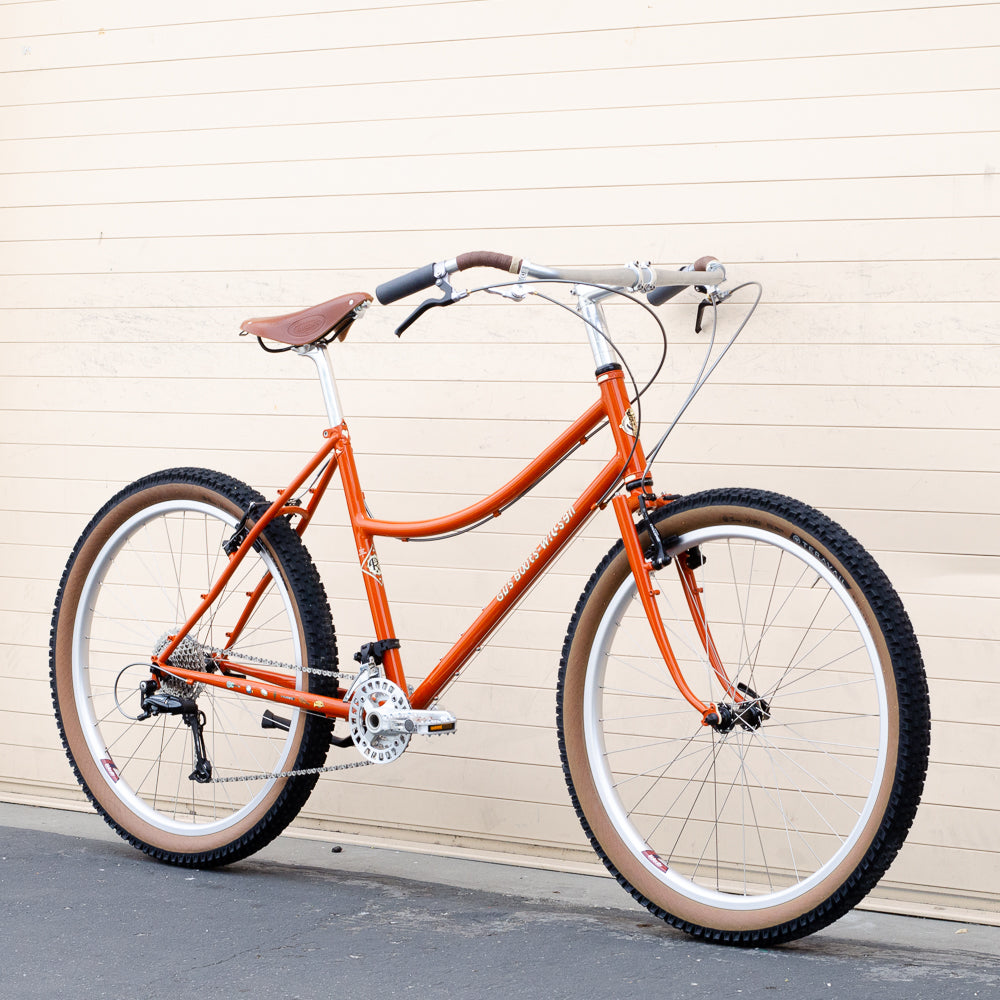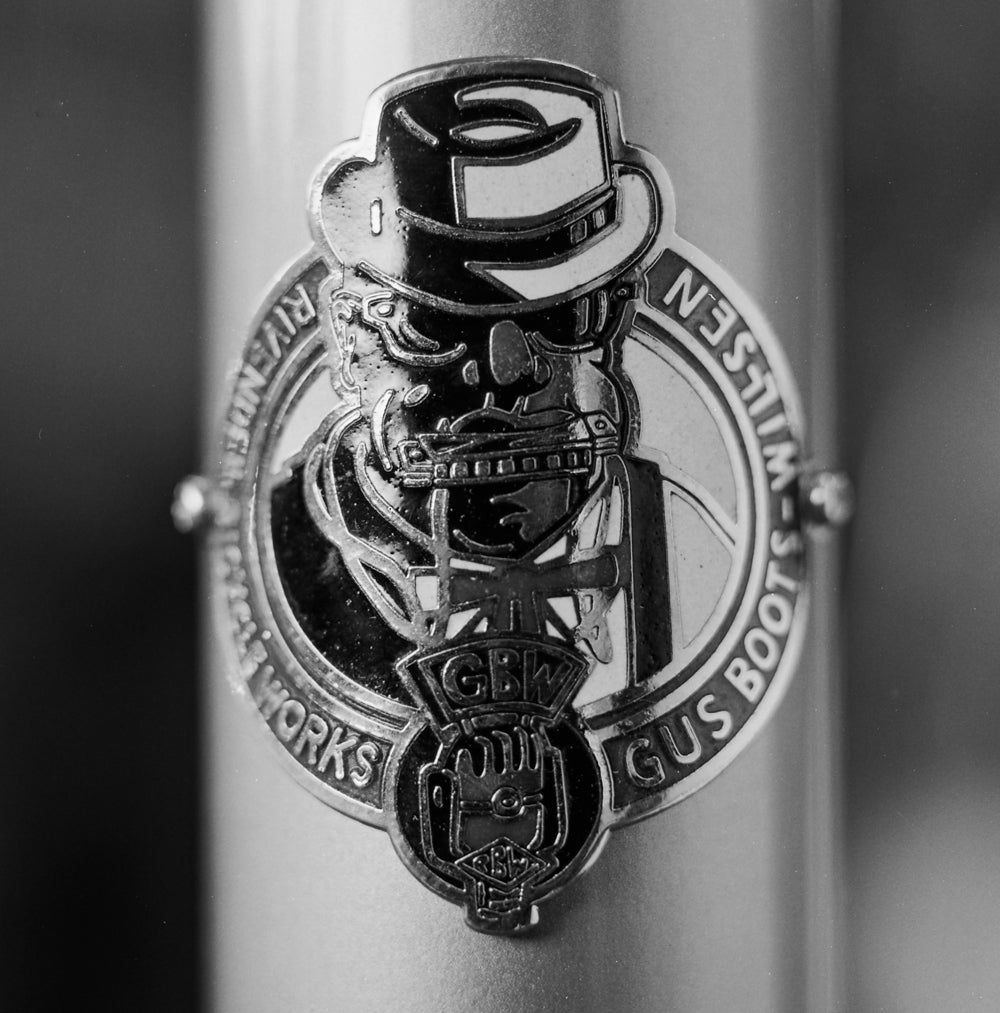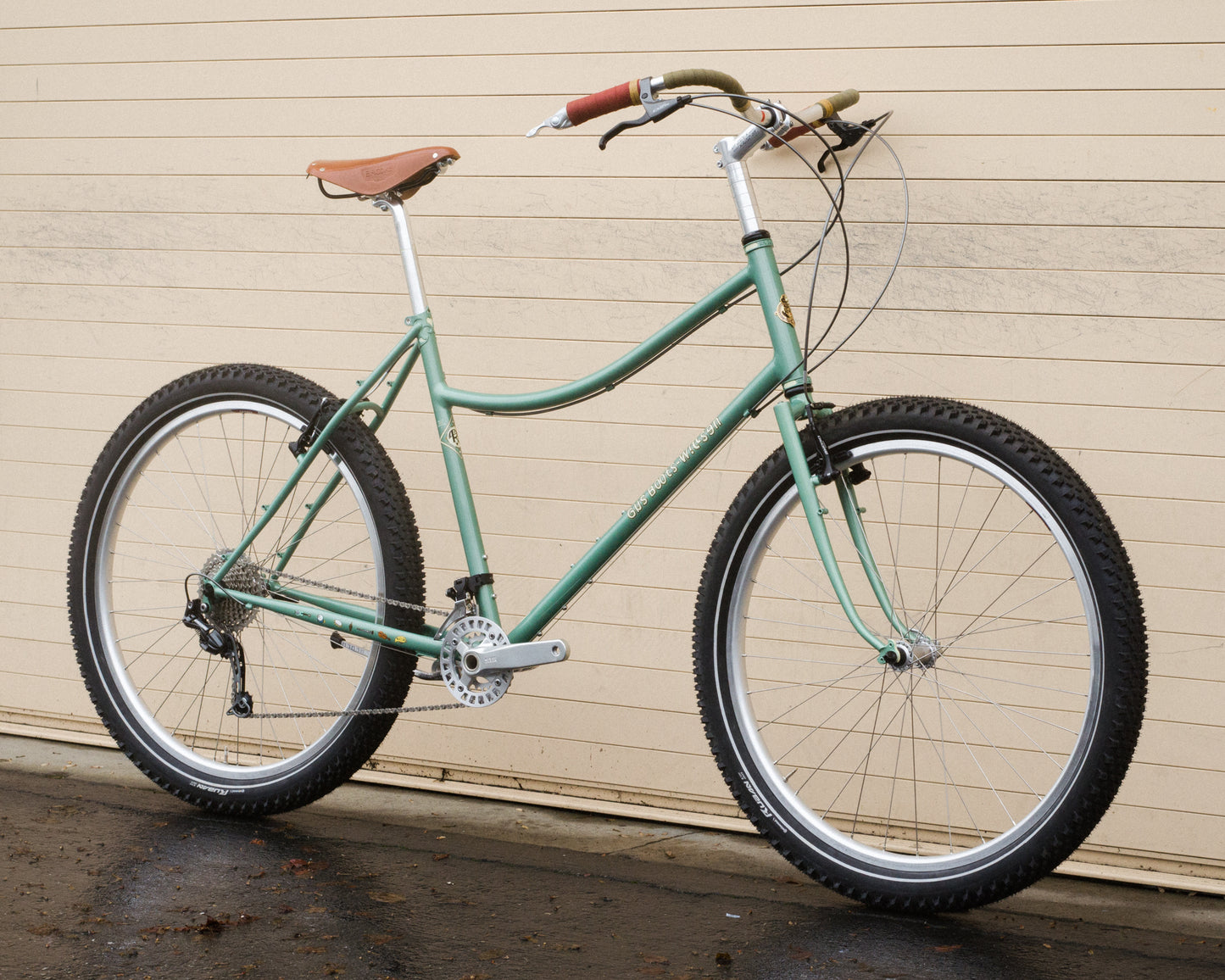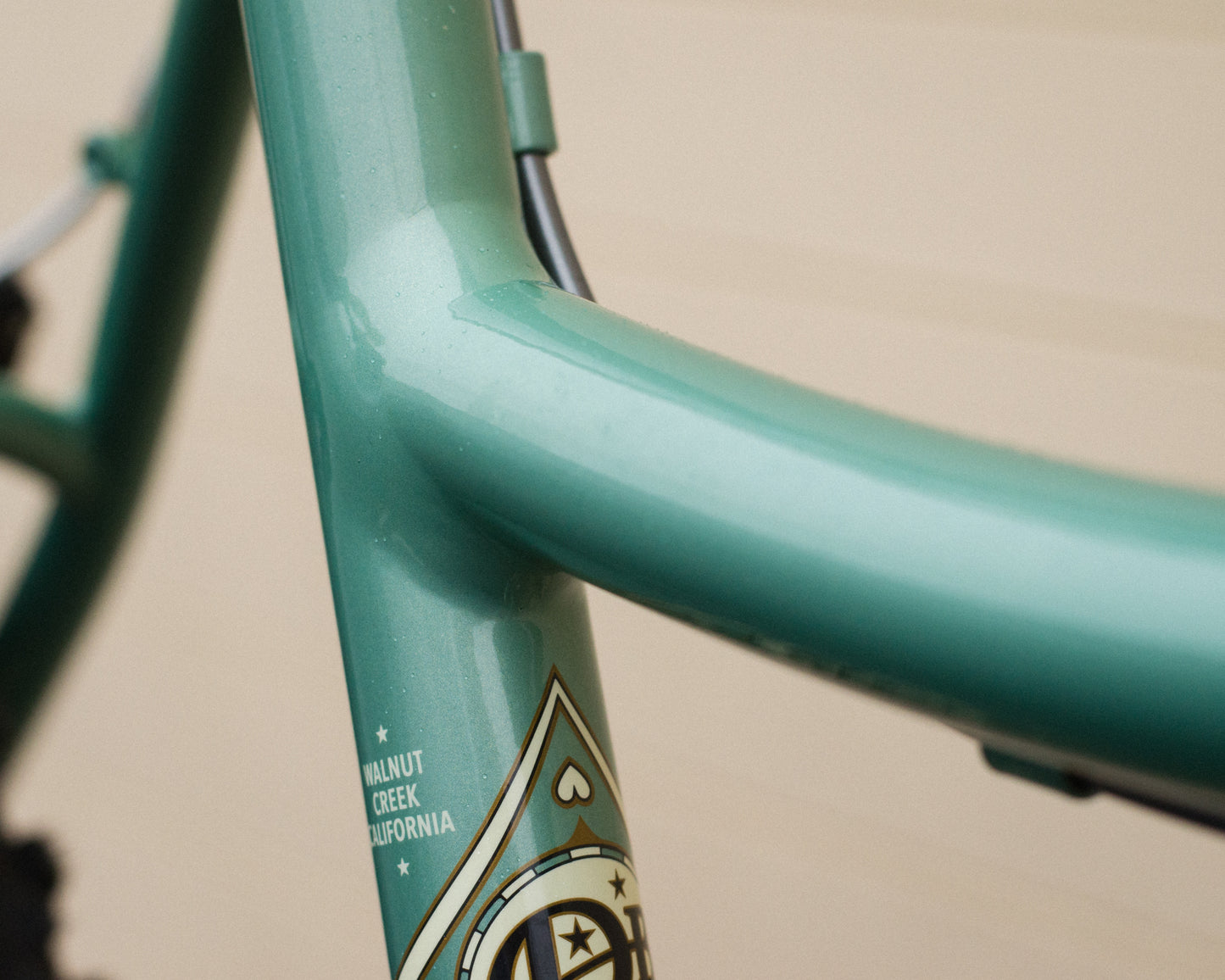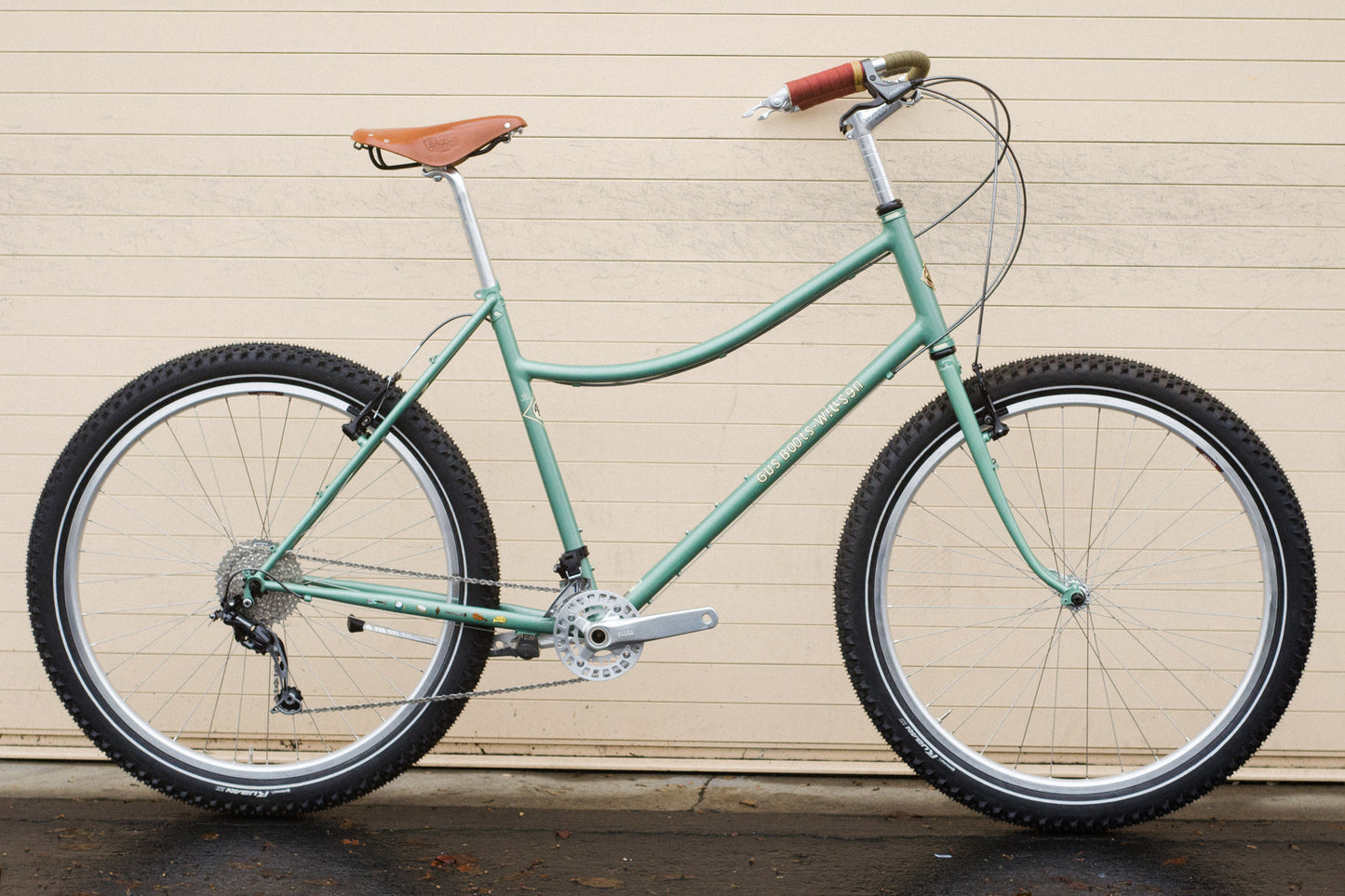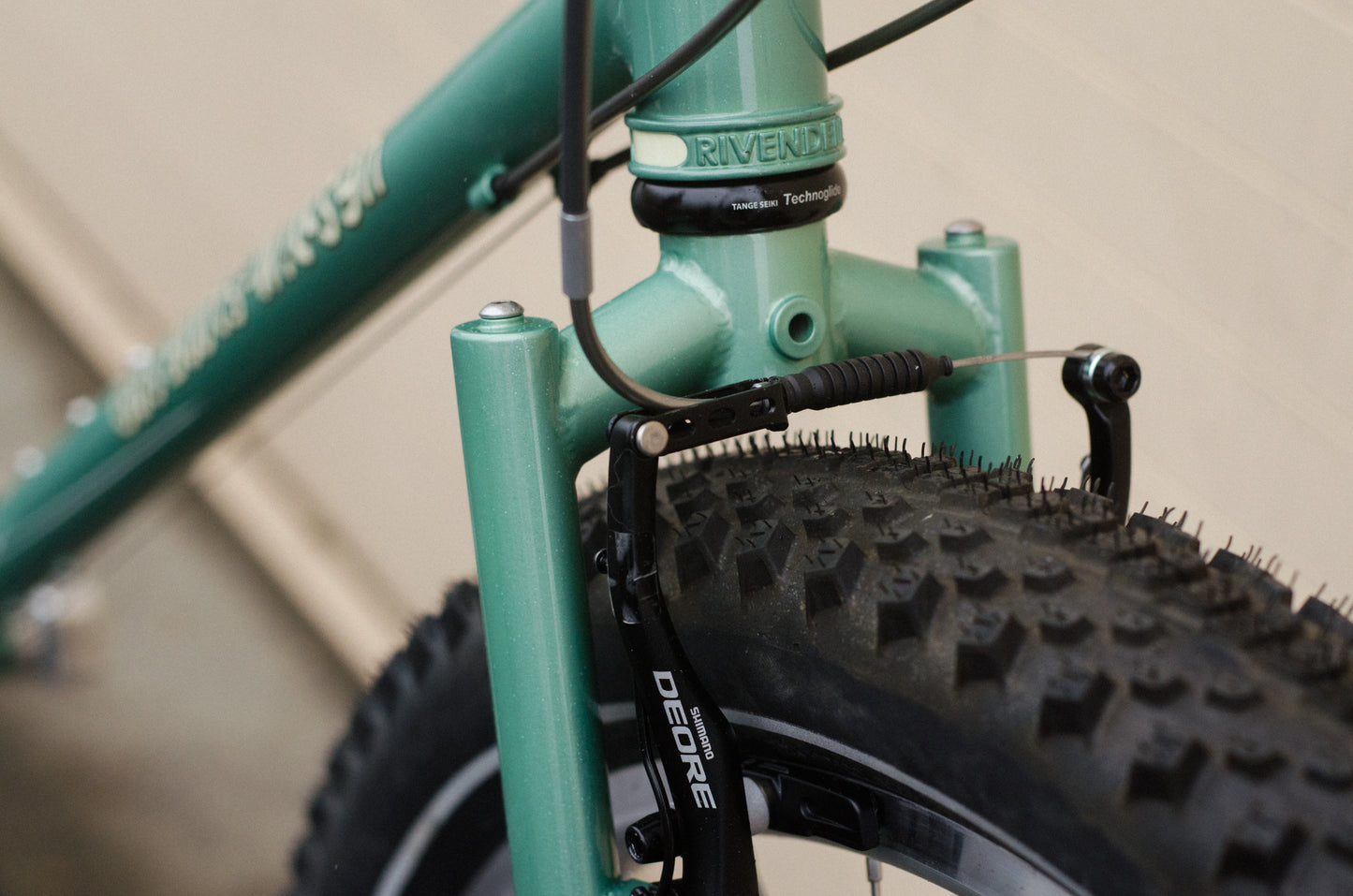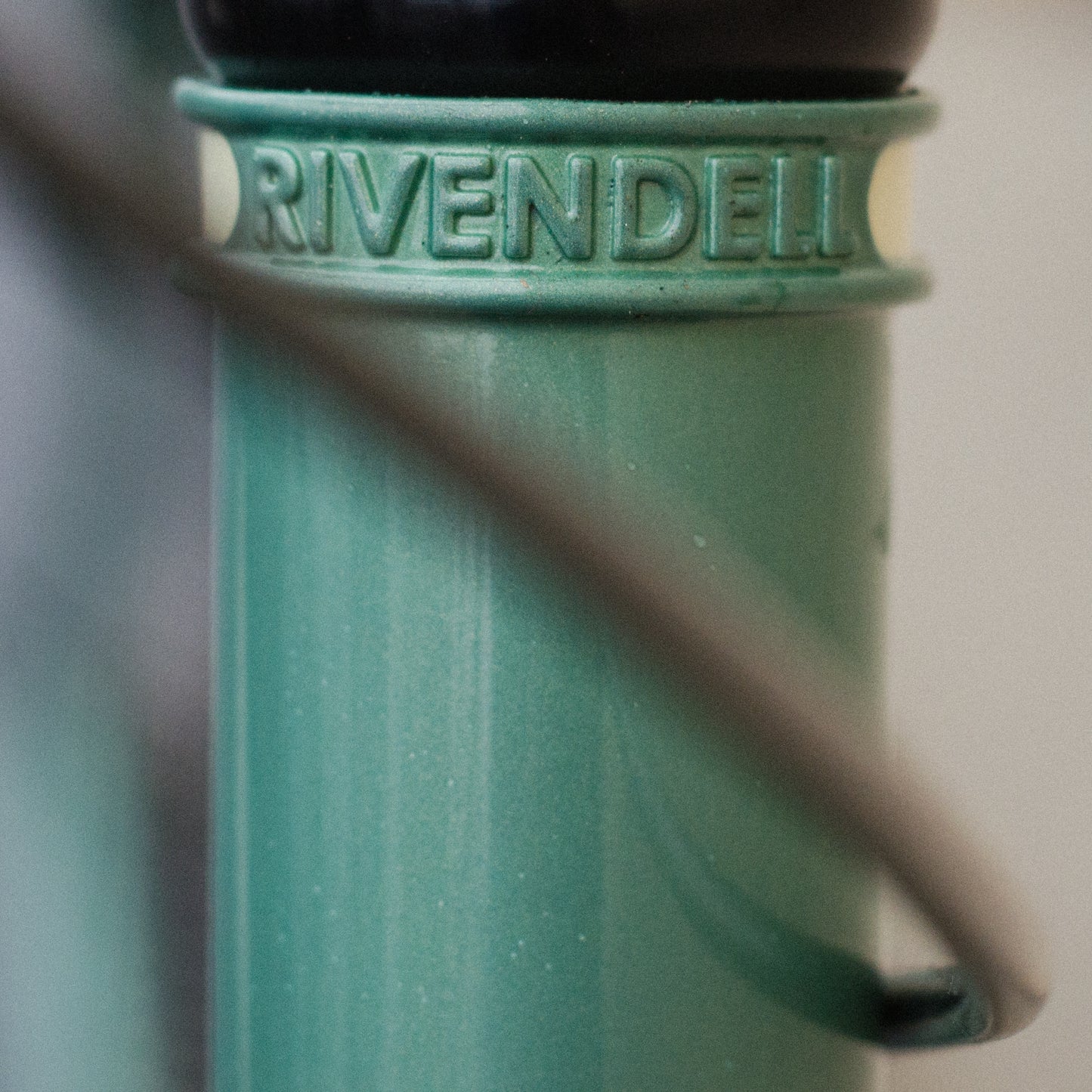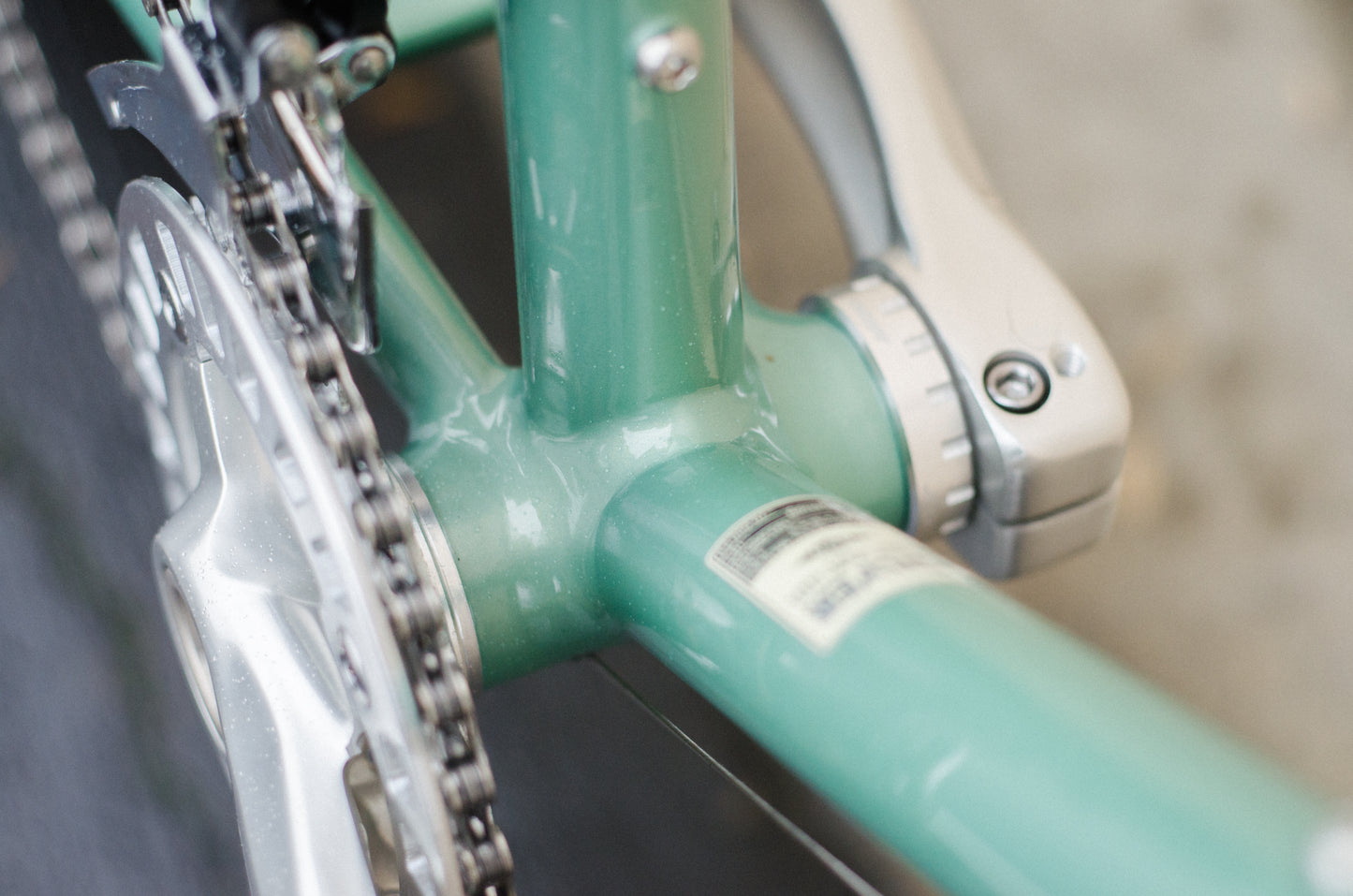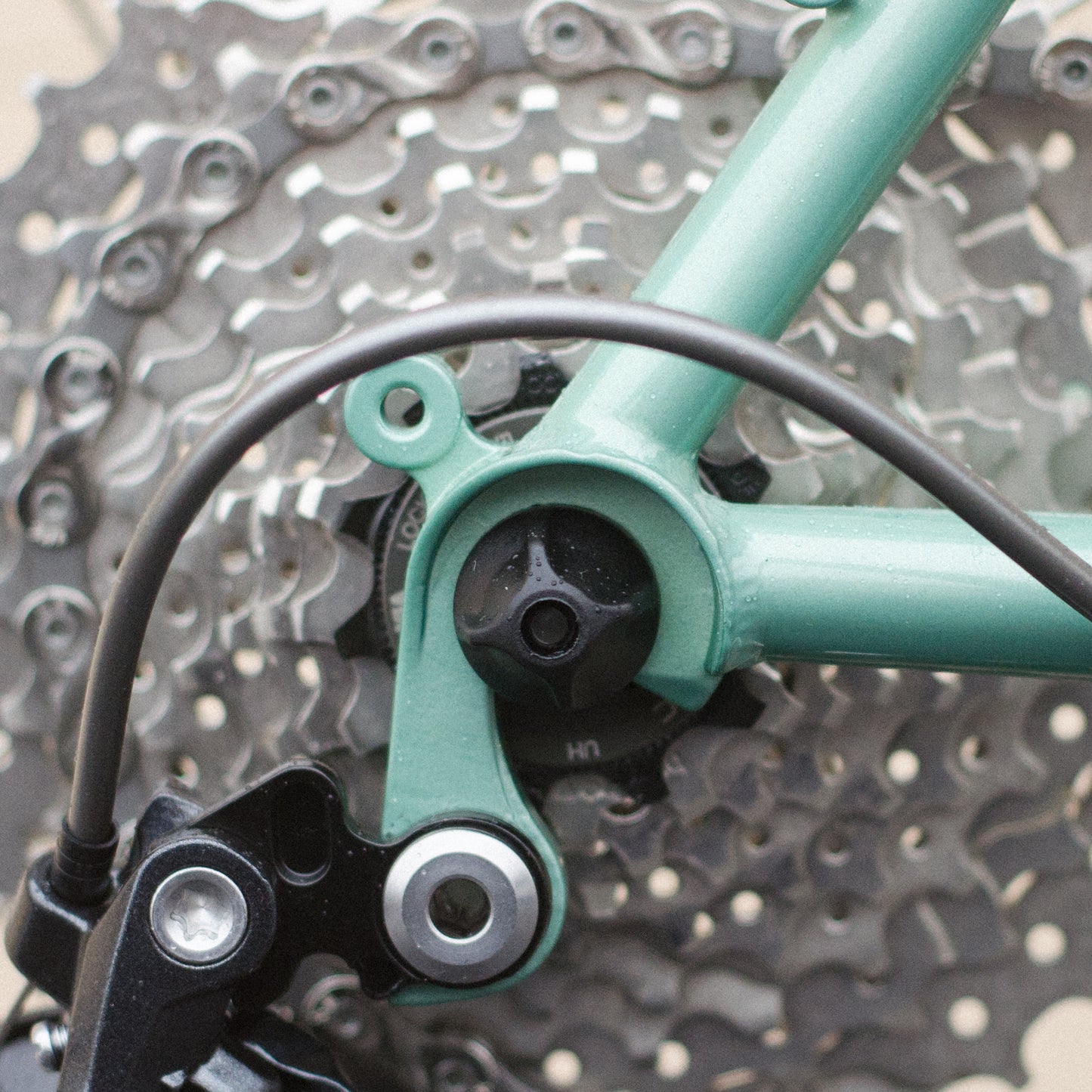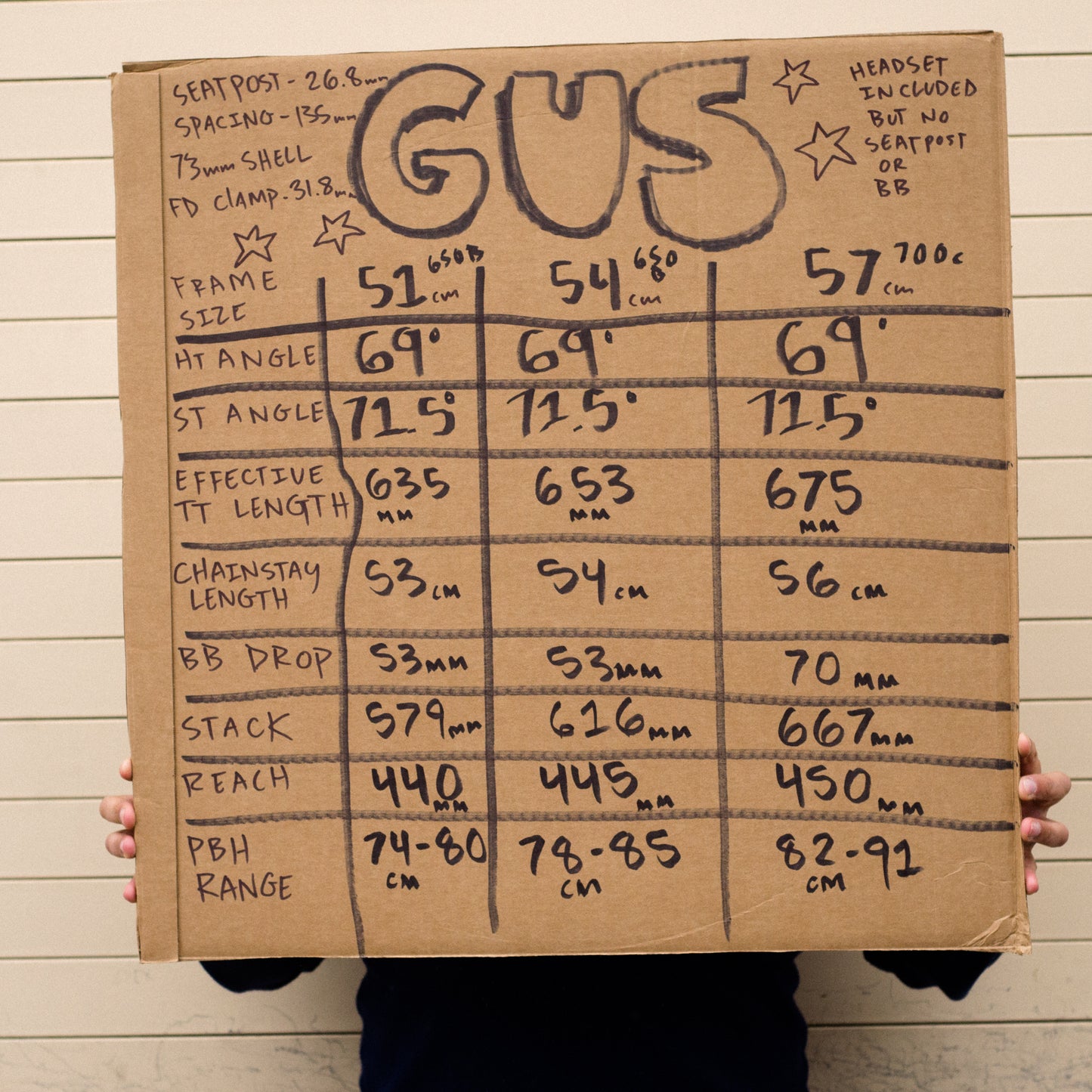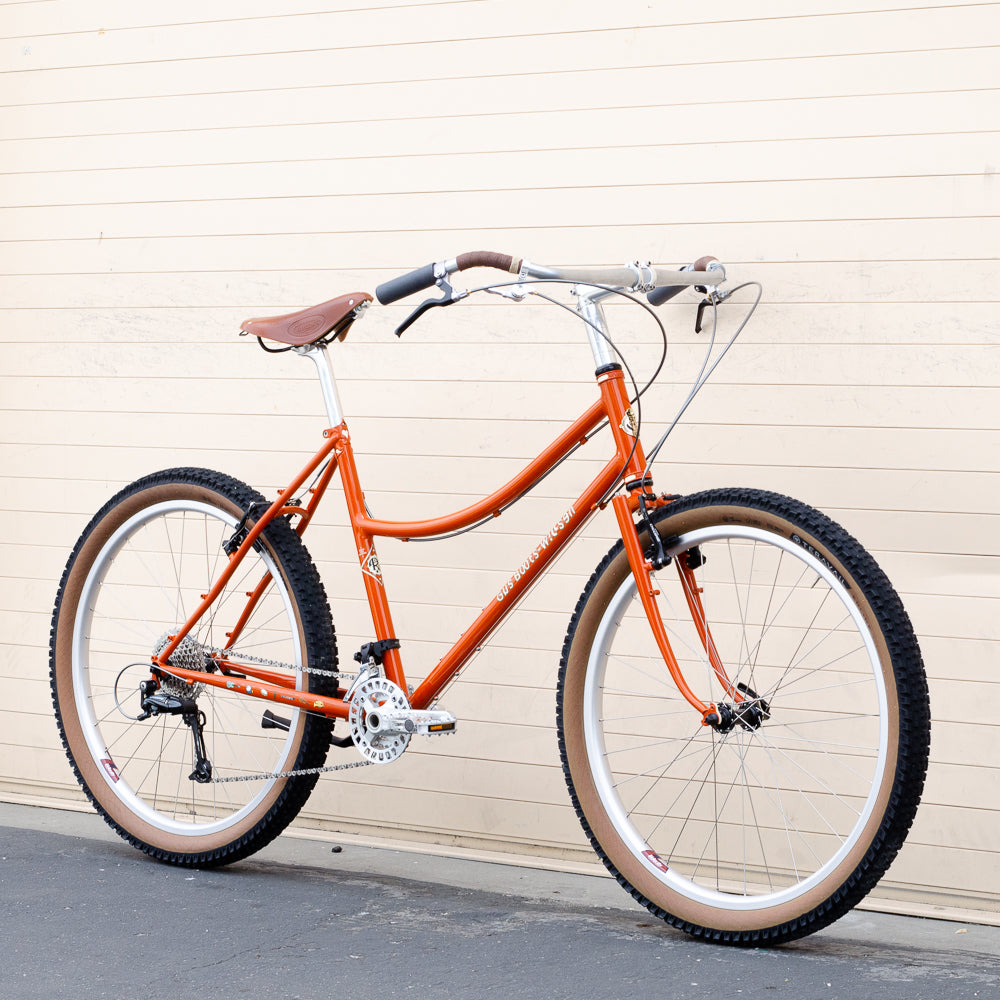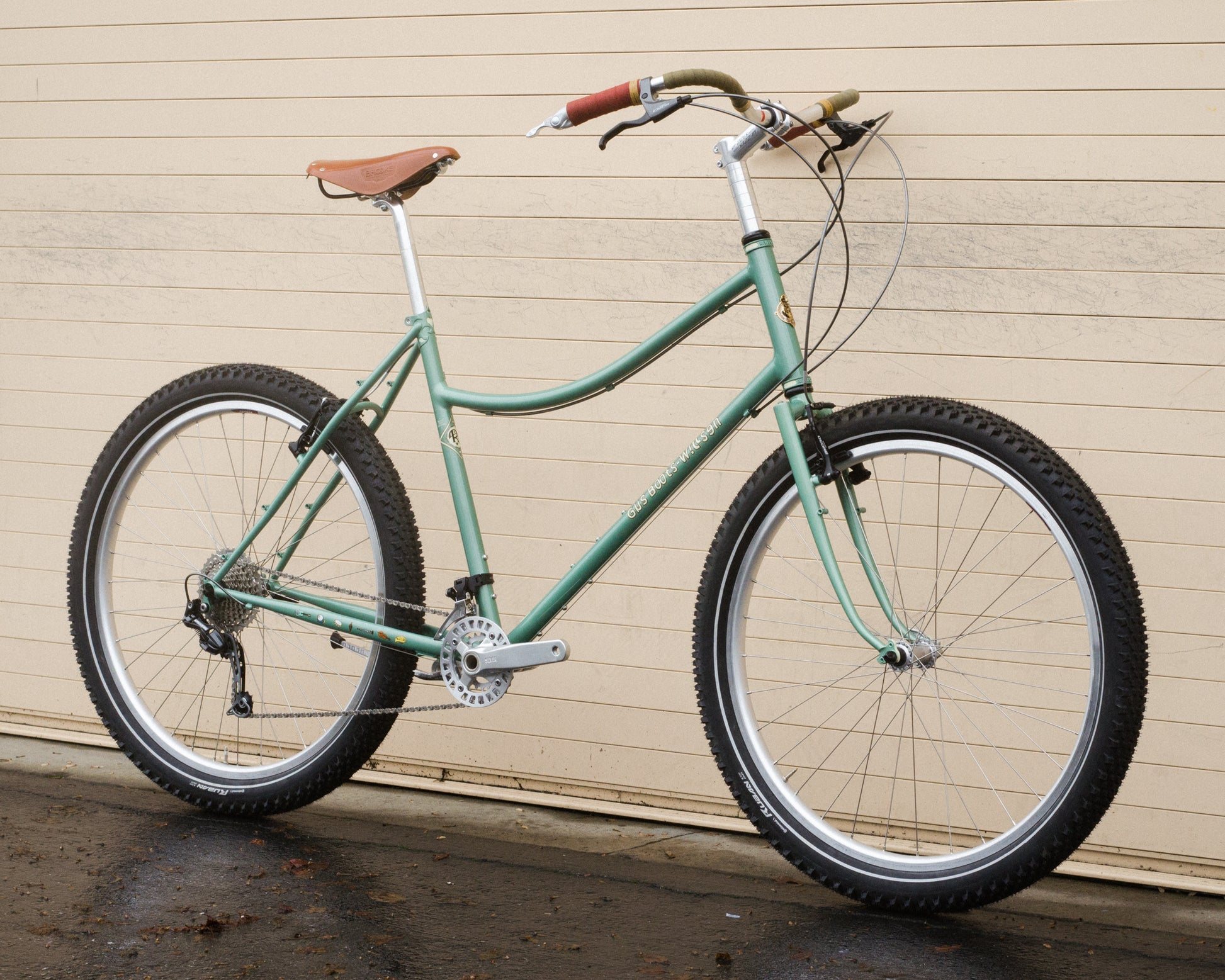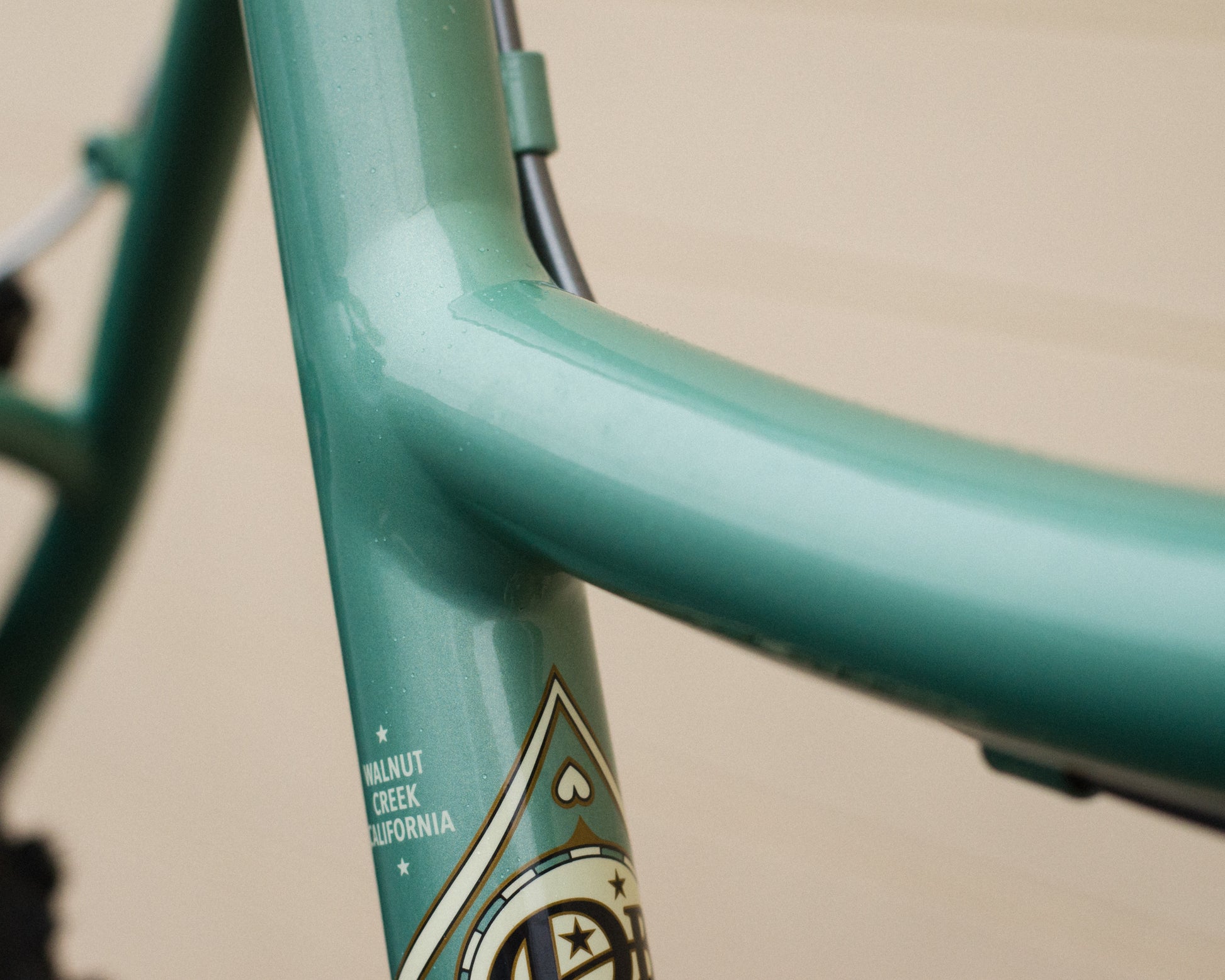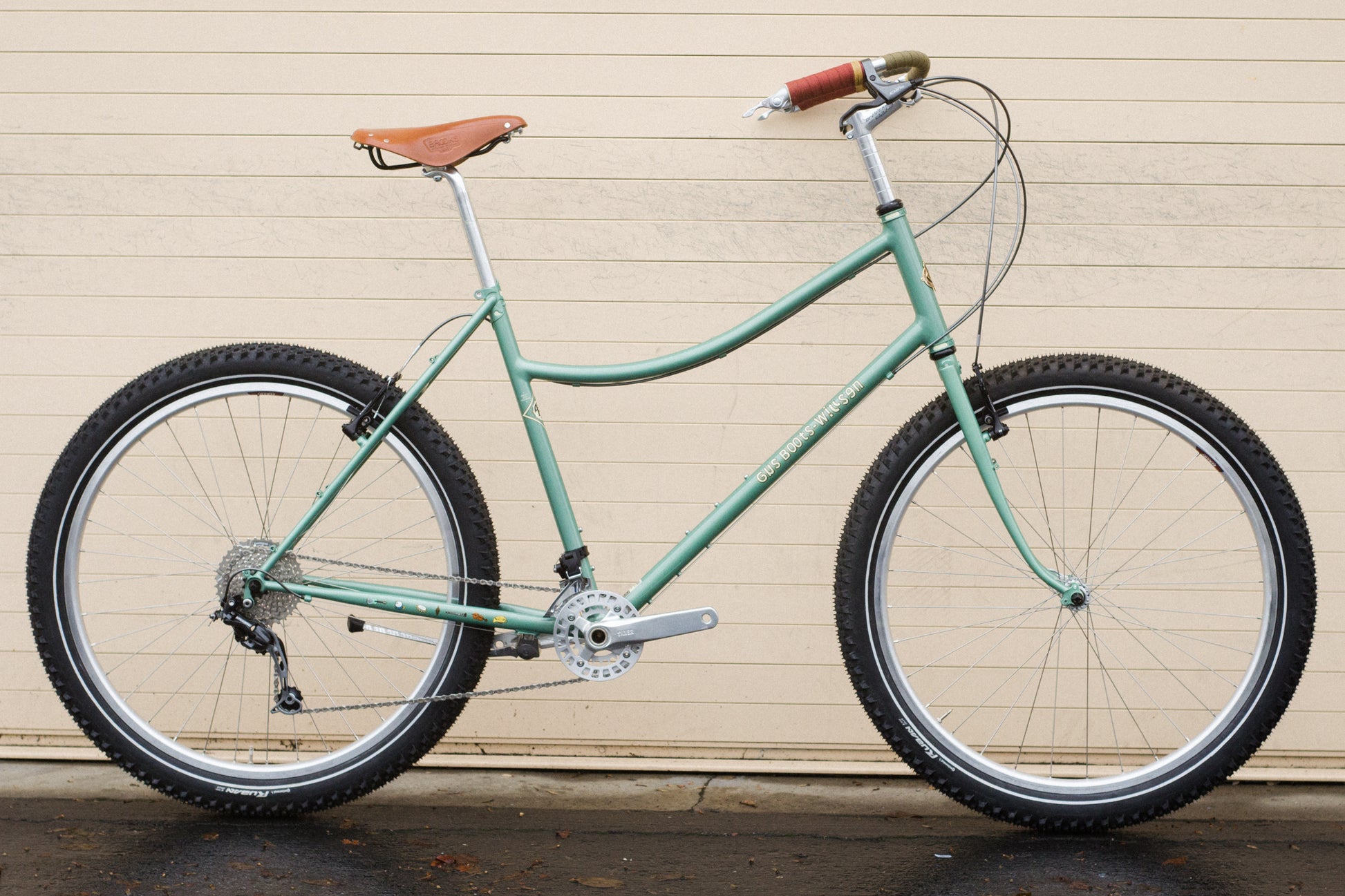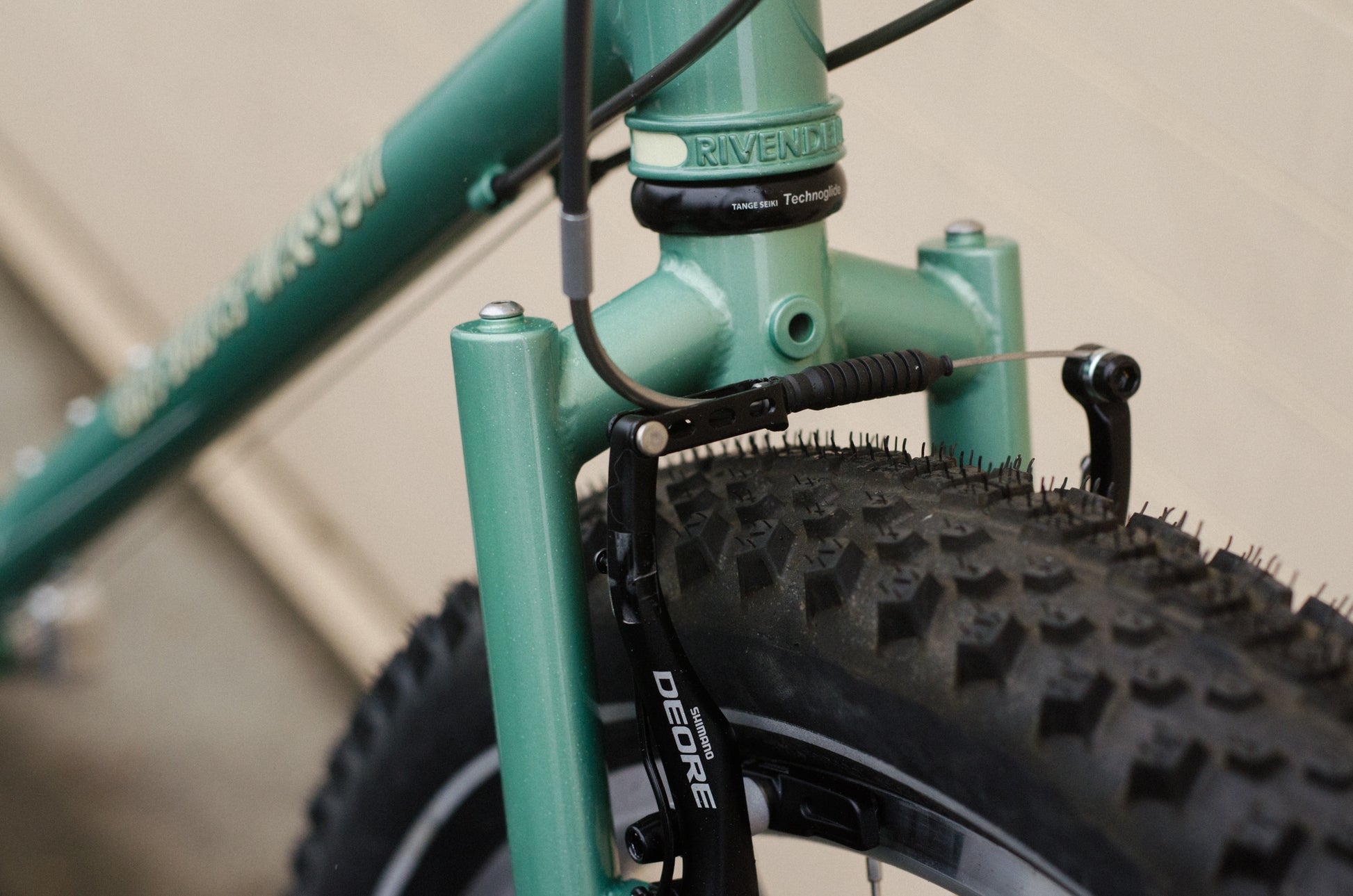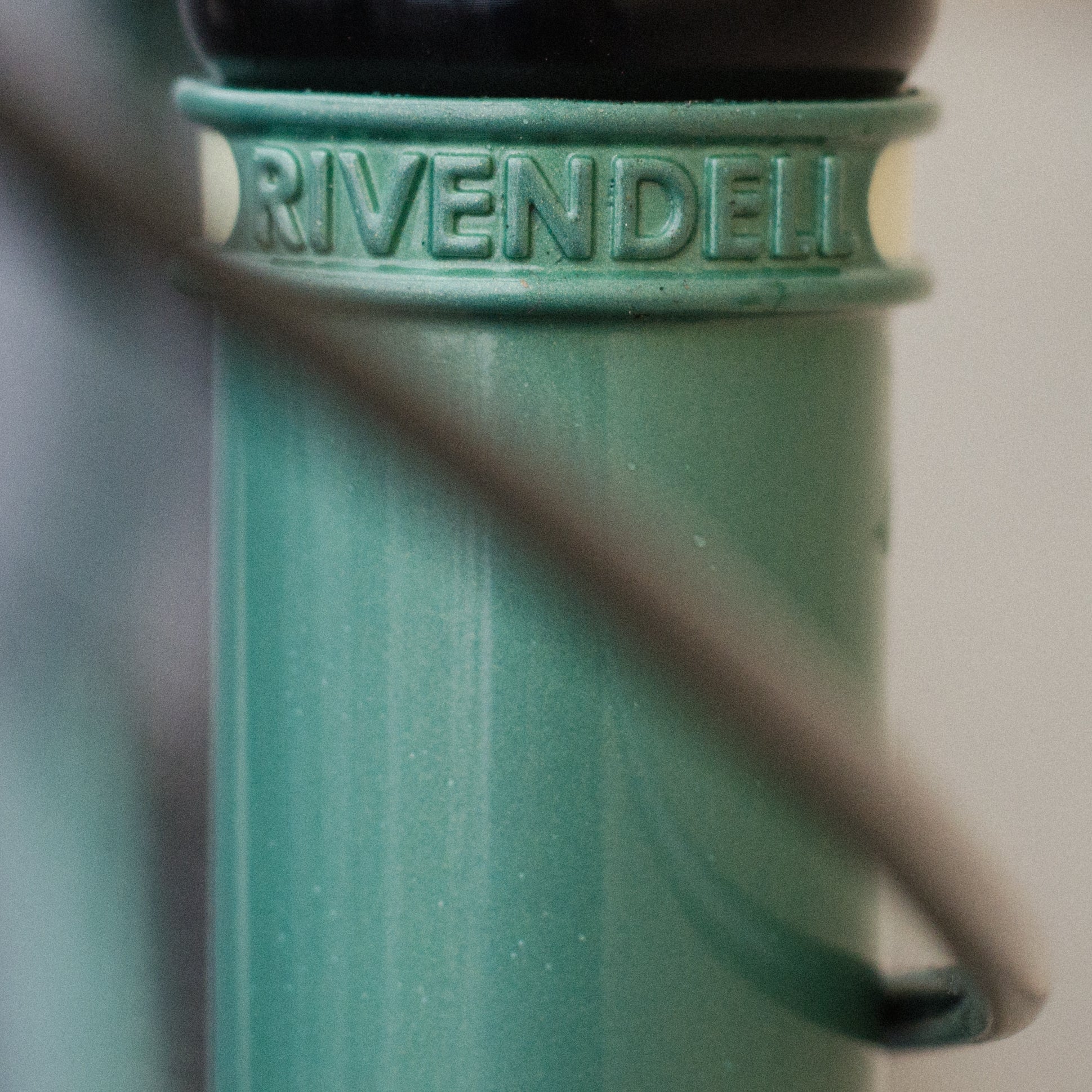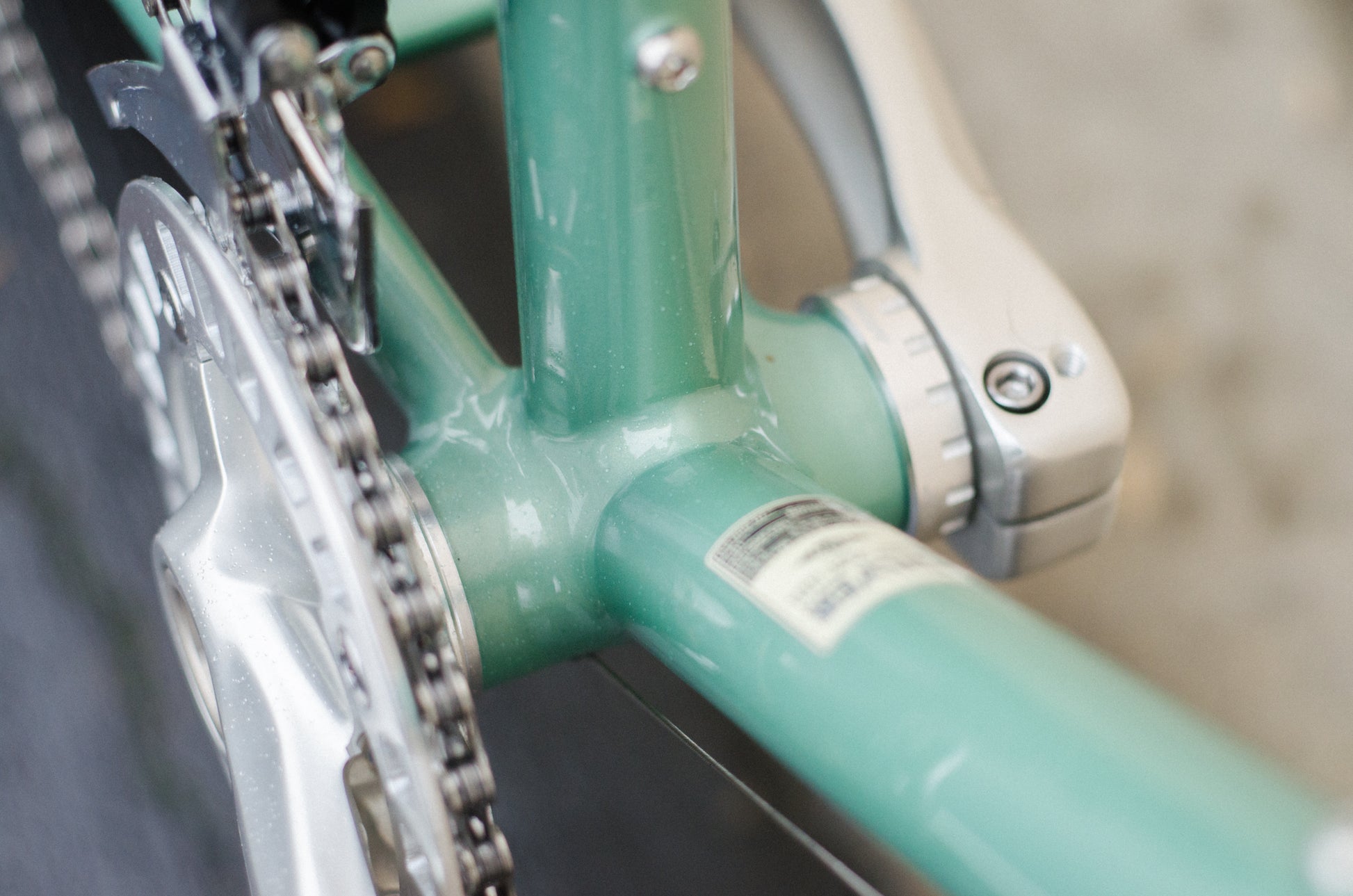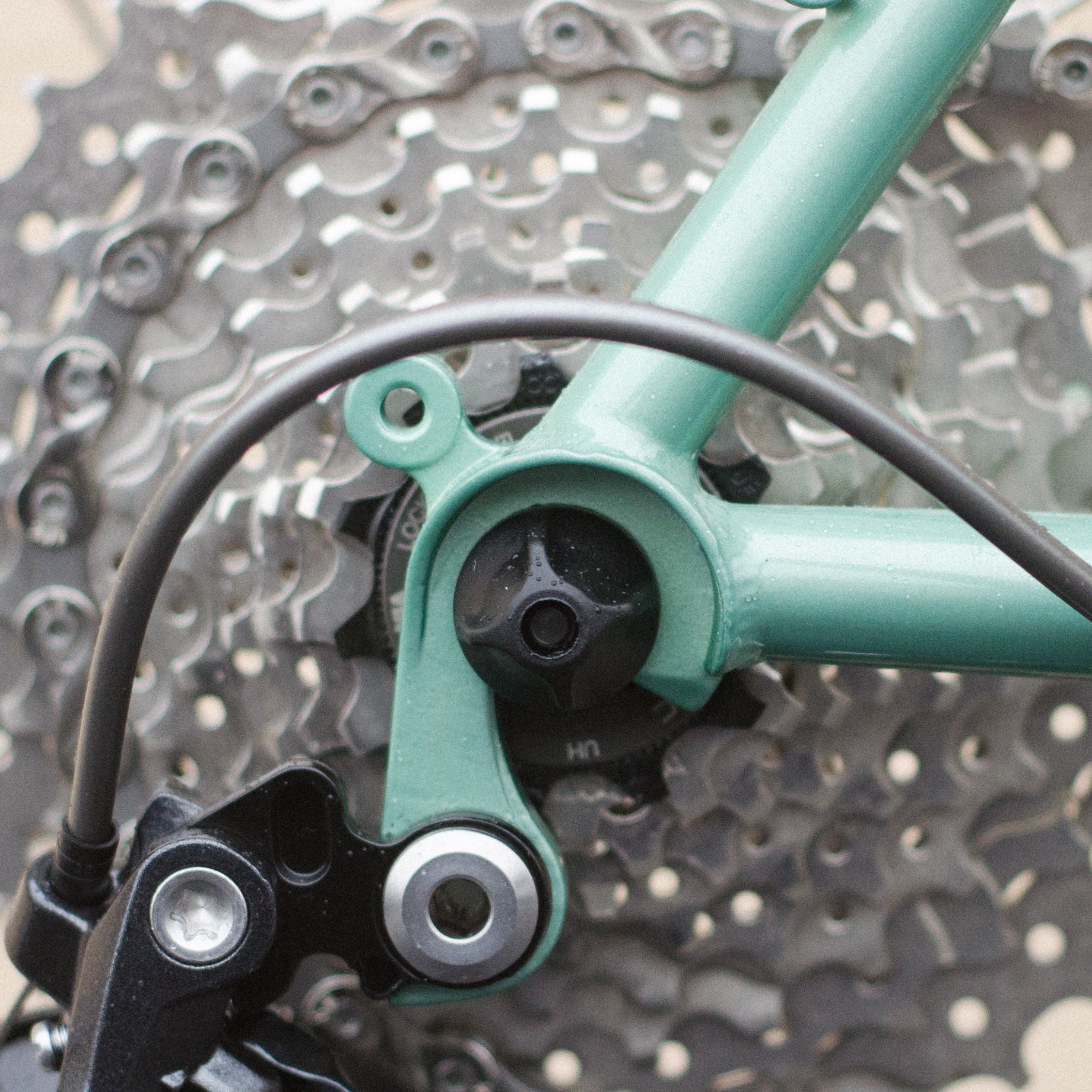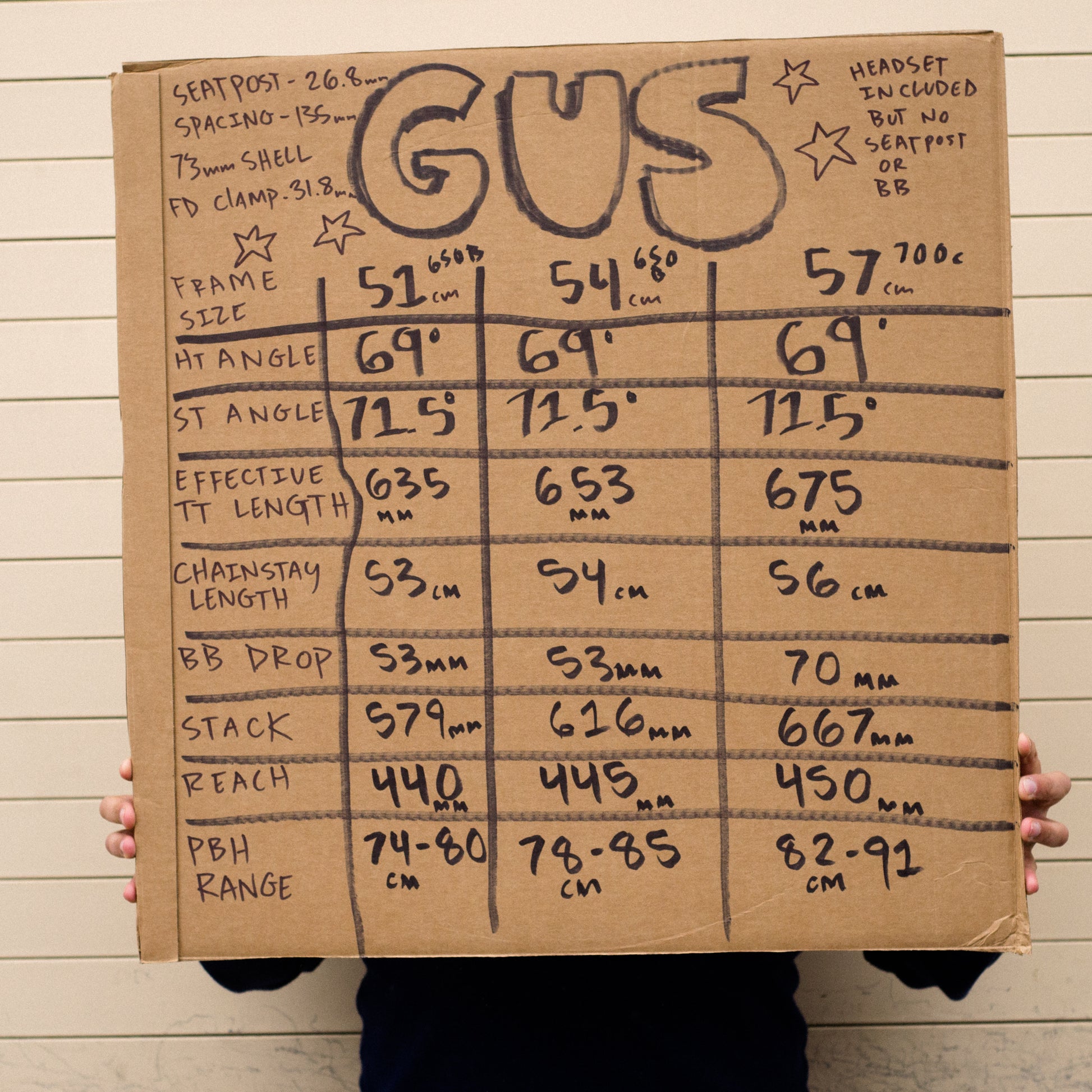Frame - Gus Boots Willsen
Frame - Gus Boots Willsen
Couldn't load pickup availability
History (why these bikes)
October 21, 1976: The first of 22 informal but still serious races in which baby boomers in their 20s rode pre-WWII paperboy bikes beyond their limits down a 1,300 foot, 2.1-mile fire trail on Marin County’s Mount Tamalpais.
Frames bent, parts broke, brakes failed, and the single-speed gears were fine going down but not back up. Each vulnerable or unsuitable part was modified or replaced, until the state-of-the-art bike had a hodge podge of parts borrowed from BMX bikes, touring bikes, road bikes, and motorcycles. By the summer of 1977, the parts were fine, but the frames still weren’t.
So in the fall of 1977, one of the riders, a 23-year-old with the cool name of Joe Breeze, built a frameset using virgin, state-of-the-art materials, and assembled it with new and trail-worthy parts. That bike, now known as Breezer No. 1, was the world’s first fully baked, non-hodgey-podgey, genuine, bona fide, mountain bike. He’d build eighty more.
Joe rode Breezer No. 1 fast and hard on Mount Tamalpais and in the Rockies in Colorado. The Smithsonian borrowed it in March 2012, and it’s still there. If you could rent that Breezer No. 1 for a day, you’d feel pretty much what Joe felt, because bumps, rubble, ruts, and loose dirt haven’t changed since 1977.
It’s mountain bikes that have changed. Thru the ‘80s, they were simple: strong frames and forks with big tires, powerful brakes, and low gears. They were egalitarian, too. Other revolutionary bikes have been classist, sexist, snobby, exclusionary, or for the costumed clique, Euro-fawning road racers. The early mountain bikes were developed and refined by racers, but they worked as well for musicians, farmers, bookworms, and slackers. People who didn’t ride road bikes rode mountain bikes and had a blast, and the bikes held up.
Mountain bikes remained simple throughout the ‘80s, but formal mountain bike racing began in 1983, and drove physical changes in the bike and attitudes toward riding. By 1990, racing had gone international, and manufacturers adopted motocross technology to give their racers an edge on the roughest, fastest downhills, and they were the new standard. John Q. Public’s lust for technology was insatiable, and each uptick in bike tech left mountain biking’s flannel shirt, work boots-and-camaraderie roots further behind.
The uncomplicated trail bike is too boring for the mass market. It doesn’t work for the high-speed/high-risk stunts that define modern mountain biking.
To drive home that our fatty tire bikes aren’t technologically unevolved mountain bikes or geared beach cruisers, friend and former employee Roman suggested hill bikes. We capitalized it for importance and added an i halfway through to make it easier to say.
A bike doesn’t have to be a Rivendell to be a Hillibike. Any ‘80s mountain bike, or any fat-tire bike without motocross technology can be a Hillibike. The term won’t catch on, but we like it.
Gus Boots-Willsen
The Gus Boots-Willsen is our most versatile Hillibike. It weighs a little more than the Susie/Wolbis because the tubes are fatter and stronger, but there’s no dumb weight. For Hillibikers of all weights and loads to 60lbs. The Boots rides light and tracks well, even on trails more suited to the noble jackass.
Frame Geometry notes
There’s a lot of misunderstanding about how a frame’s geometry (angles, dimensions) influences fit and ride. Conventional scuttlebutt says a short chainstay makes a bike quicker; a slack seat tube adds comfort; more “trail” or less will make your ride better or worse; a longer top tube stretches you out and is bad for women; and short femurs need steep seat tube angles.
I believed all of that for decades and helped spread it to a generation and a half of riders. Back then I thought that drop bars = performance = wonderfulness of multiple hand positions = the only way to go. Most designers still believe that. I don’t, not any more.
Also back then, I didn’t understand how a swept-back handlebar allows you to design a bike that rides better when you aren’t packed like a fish in a can in a peloton.
I didn’t know how a longer top tube can feel shorter than a shorter one, or the effects of converging or diverging seat and head tube angles. Early on, it struck me weird that bikes grow taller faster than they grow longer, but I figured the hallowed brands knew what they were doing, and knowing how they did it constituted learning to me.
Now I think they designed bikes around available lugs, and they found narrow formulas that worked OK for certain sized bodies riding drop-bar bikes on the roads of post-war Europe. They paved the way and were the turtles on whose backs we now stand and so on, but we design our Hillibikes with Hillibike numbers.
We may show the geometries online, but may not. I have mixed feelings about that, because I think they mislead people into thinking they can tell how a bike rides by its numbers, and numbers that vary from what any given reader’s norm tends to come off wacky, even when they make super sense.
These numbers are important:
seat post: 26.8mm
FD clamp: 31.8mm
1 1/8 threadless headset (included)
73mm bottom bracket shell
Three things that make a bike work well on trails
1. Long wheelbase. Length adds stability in surfboards, skateboards, cars, skis, boats, and bicycles. Our Hillibike chainstays are almost half a foot longer than your garden-variety modern mountain bike chainstays, and the bikes ride better for it.
2. High handlebars. A higher bar makes it easier to keep your weight safe and rearward riding position on steep descents, and is more comfortable on all terrain. When you hit a bump a higher bar makes it easier to control the bike. Lower bars are marginally better for climbing, but climbing is in your legs and technique, not bars. Just make sure your grips are up where they feel good.
3. Big tires. Big soft knobbies work great, and any skilled rider should be able to ride rough surfaces with 2-inch tires and some care and skill. The CLEM fits tires at least up to 2.4, and the Gus and Wolbis, to 2.6 inches. That’s plenty big.
The Gus and Susie are made with the best bicycle material in the world
Our frames and forks are made of chromium-molybdenum steel (CrMo)—the best-for-bicycles, most dimensionally appropriate, toughest, longest-lasting, most recyclable, and safest frame and fork material in the world.
Safety
CrMo responds to trauma by denting and bending, not shattering or snapping in half. If it gets hurt by minor impacts, gouges, and scratches, it tends to slough them off. Carbon degrades with exposure to sun and water; CrMo doesn’t. Any damage or threat to steel is visible because it’s on the outside, not hidden inside among layers of carbon fabric. That’s why steel is used for hammers, nails, bridges, the skin of ships, and the guts of rocketship engines.
Rust and Longevity.
There are a dozen or more readily available sprays that stop or prevent rust on steel, and yet the streets of Europe and Asia are filled with 50-year old steel bikes that have never been treated or coddled, and still roll. Spray your frame and don’t fret. Your Hillibike will be rideable decades after today’s carbon frames are landfill.
Quality.
Our Hillibikes are hand-made and built as well as any production frame in the world. Even our budget CLEM has an all-out Rivendell crowned fork, seat lug, dropouts, and head tube rings. Each Gus and Wolbis frame (not including fork) takes one builder five hours to make. They’re all good frames.
Shipping:
Frames:
Frame shipping is automatically set at $87 within the lower 48 states.
This rate may be adjusted depending on the actual rate at the time of shipping.
Bikes:
Bike orders will default to $250 to the lower 48. If your actual shipping price is more, we will reach out to you for an additional payment.
https://www.rivbike.com/pages/shipping
Share
